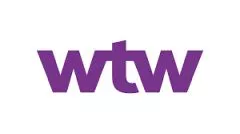- in Africa
The nuanced landscape of credit insurance reveals a spectrum of hidden costs and underappreciated benefits for multinational organizations.
In the complex world of multinational trade, credit insurance often takes center stage as a vital risk management tool. It safeguards businesses against non-payment, ensures cash flow stability, and supports global trade growth. However, as multinationals grow in scale and scope, the nuanced landscape of credit insurance reveals a spectrum of hidden costs and underappreciated benefits. To optimize these programs, businesses must recognize and address these factors while leveraging solutions that enhance efficiency and strategic value.
The hidden costs
Internal operating costs for managing local policies: Within many multinational organizations, credit insurance policies are handled locally across various jurisdictions. This decentralized approach can lead to inefficiencies in administration, duplicate efforts, and difficulty maintaining consistent oversight.
Compliance costs from internal process gaps: Multinational policies often come with detailed obligations that, if unmet, can result in costly compliance breaches. For example, missing credit limit reviews or failing to notify insurers of overdue payments can jeopardize claims.
Over-insurance of low-value accounts receivable: Insuring all accounts receivable (AR) uniformly can result in high costs, especially for low-value accounts where the insurance premium outweighs the risk.
Variable insurance taxes by country: Many companies overlook the insurance tax that varies across countries, adding an additional layer of cost to premiums. Without strategic premium allocation, businesses may face higher costs unnecessarily.
Credit limit workload: Managing credit limits for small, non-critical clients can lead to excessive administrative tasks.
The hidden benefits
Improved financing conditions: Credit insurance policies can serve as high-quality collateral for banks. Banks view these policies as a tool for reducing credit risk and if adequately aligned with their capital relief requirements these benefits can be passed back to the multinational organization as improved financing terms.
Additional capacity: By having credit insurance policies properly aligned with banks' capital relief requirements, banks will be more likely to secure additional coverage for the portfolio with their own internal lines.
Improvement in debt collection: Debt recovery could be improved in transactions with well-designed credit insurance policies in which banks play a role. Banks could add additional pressure to the collection process when buyers are customers of the bank.
Risk prevention through superior information: Credit insurers provide unparalleled insights into buyer risk profiles, helping businesses make informed decisions. This proactive risk prevention is a significant hidden benefit, ensuring businesses avoid entering relationships with high-risk buyers.
Strengthened cash flow stability: The stability offered by credit insurance enables better planning, ensuring businesses can weather economic uncertainties with confidence. In addition, the increase of financial agility enables effective responses to opportunities and challenges in the global marketplace.
Simplified administration: By either using shared service centers or structuring non-cancellable limits more effectively, having a holistic view can improve efficiencies in administration, remove duplication efforts or maintain oversight of the credit insurance program.
Increased market leverage: The enhanced competitiveness against the market strengthens negotiations with third parties. Credit insurers and banks are more willing to negotiate with flexible and scalable credit insurance programs.
Optimizing your credit insurance program
To realize the benefits and mitigate the hidden costs of credit insurance, multinationals should consider these actionable steps:
01 Enhance banking integration
Structure programs to align with bank requirements, maximizing collateral usability and reducing financing costs.
02 More consolidated administration
Use shared service centers to manage global policies, ensuring consistency, compliance, and cost efficiency.
03 Tailor coverage levels
Avoid blanket coverage by segmenting AR based on risk profiles and retaining smaller, low-risk accounts.
04 Leverage non-cancellable limits
Simplify administration by securing non-cancellable limits for critical buyers.
05 Optimize premium allocation
Work with insurers to strategically allocate premiums globally, balancing tax efficiency and risk needs.
06 Invest in technology
Implement platforms to automate compliance tracking and data integration, reducing manual errors and associated costs.
The content of this article is intended to provide a general guide to the subject matter. Specialist advice should be sought about your specific circumstances.




